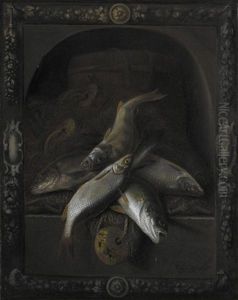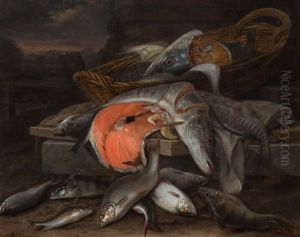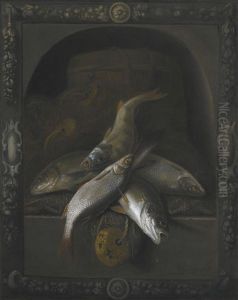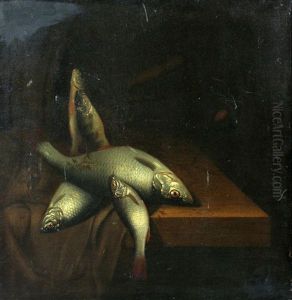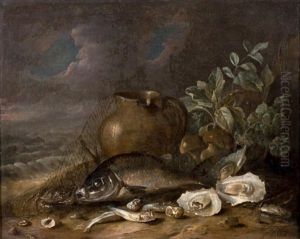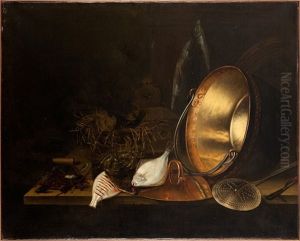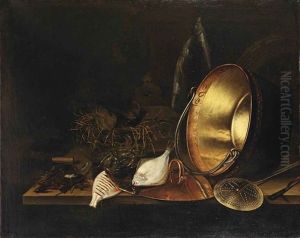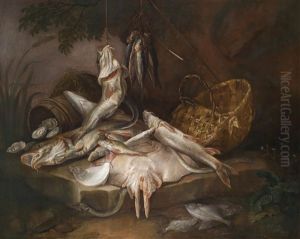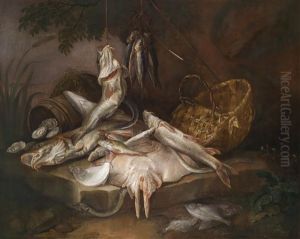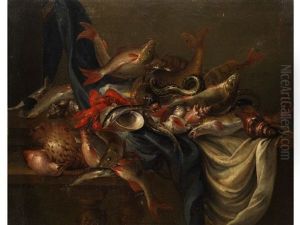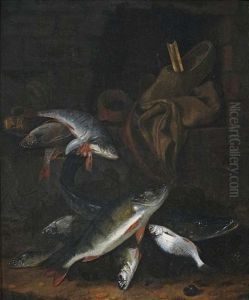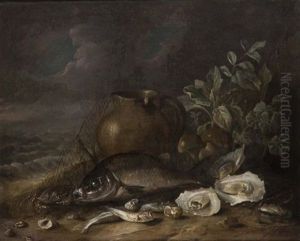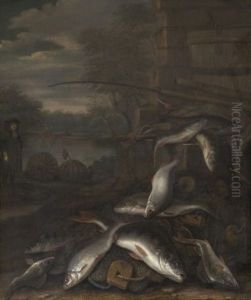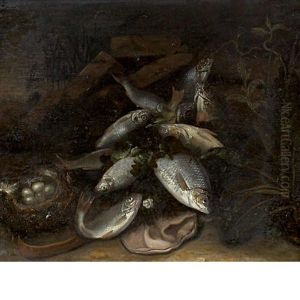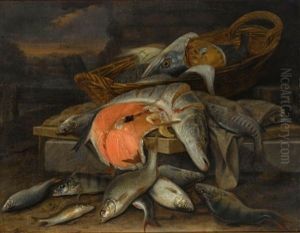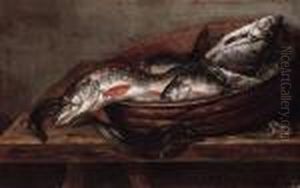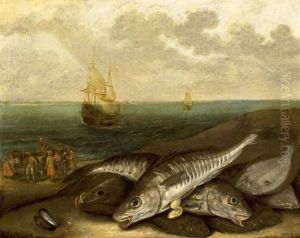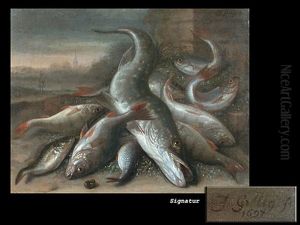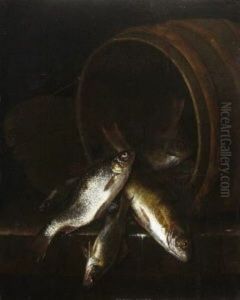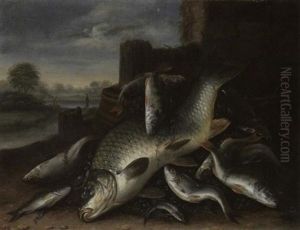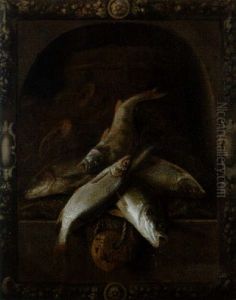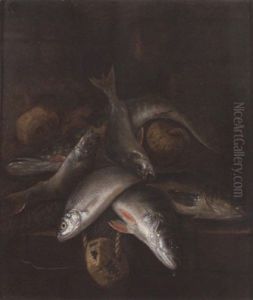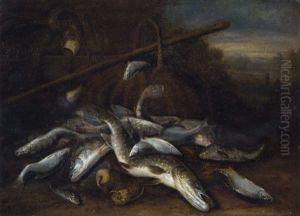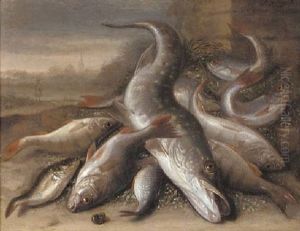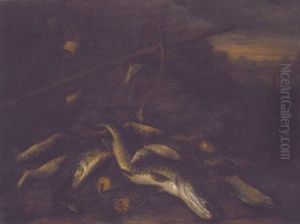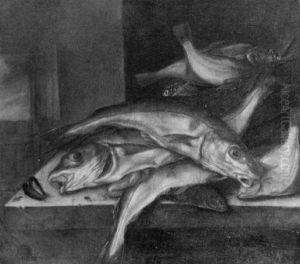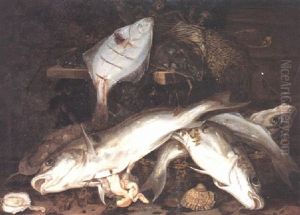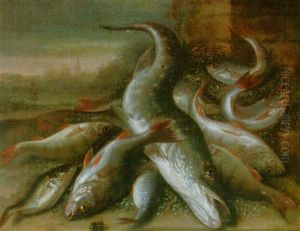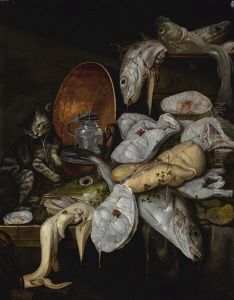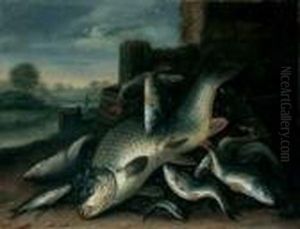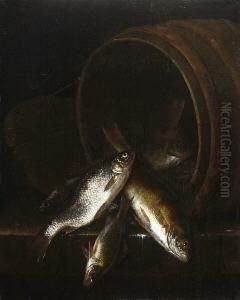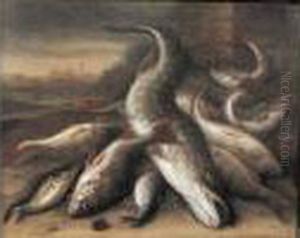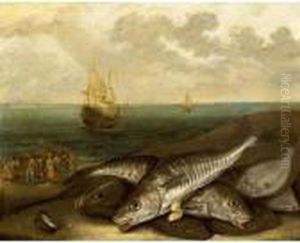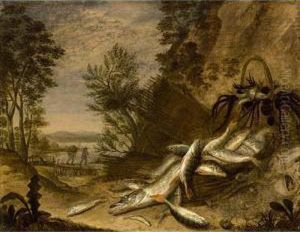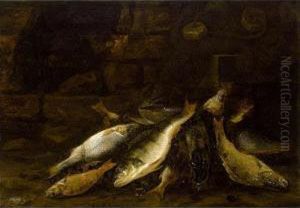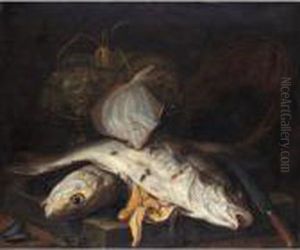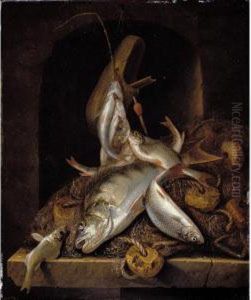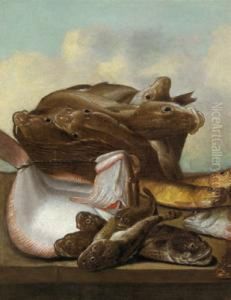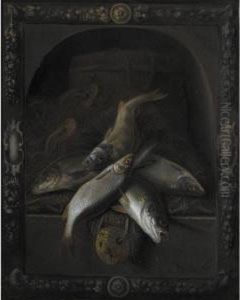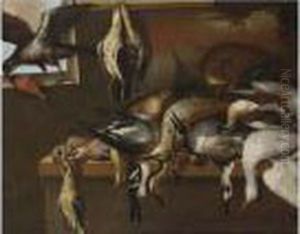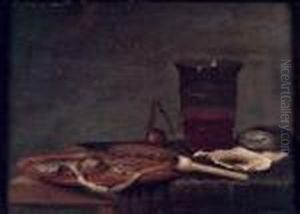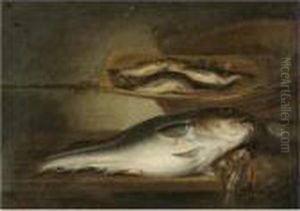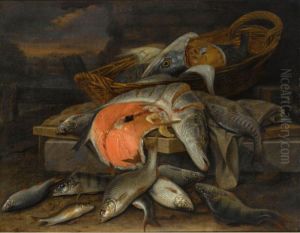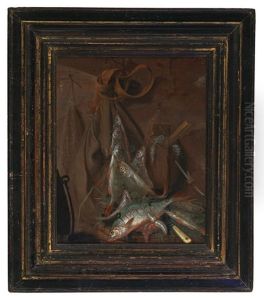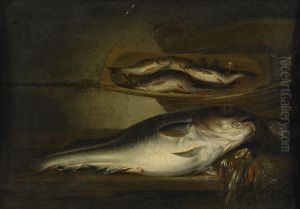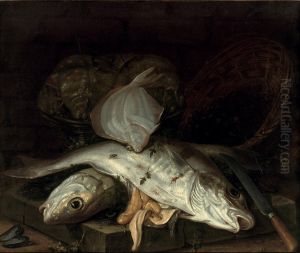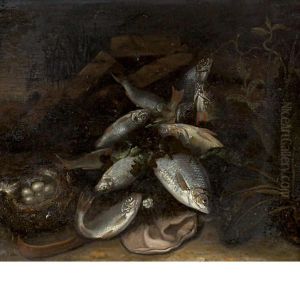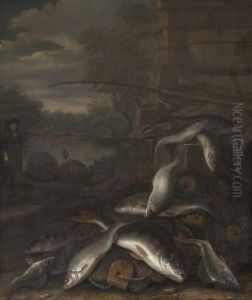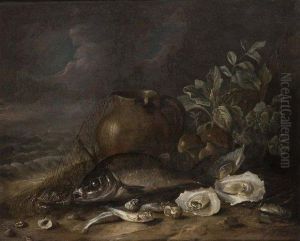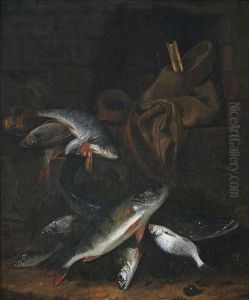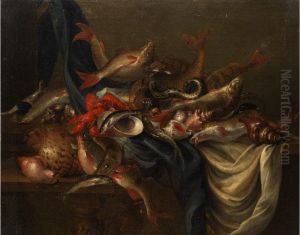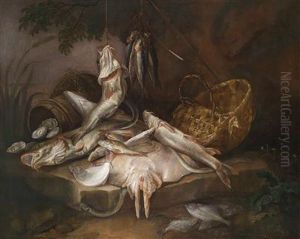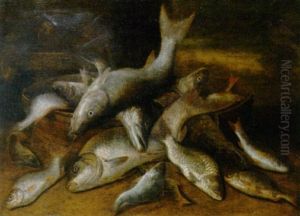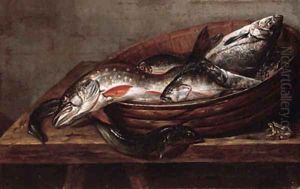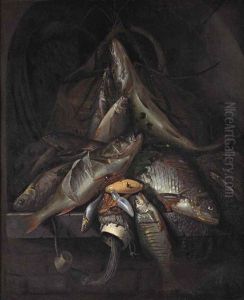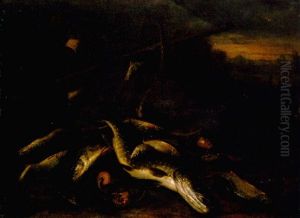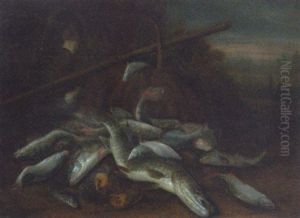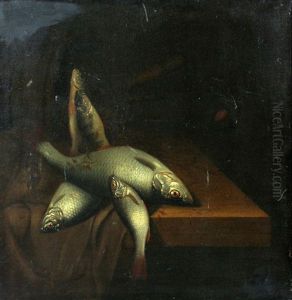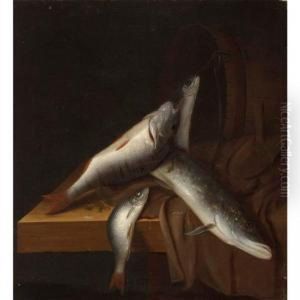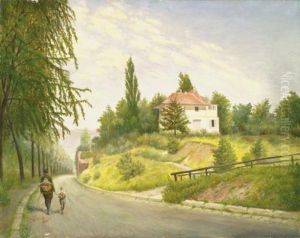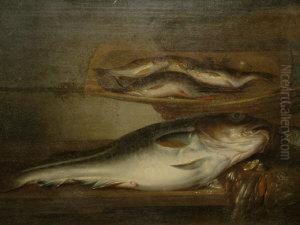Jakob Gillig Paintings
Jakob Gillig was a Dutch Golden Age painter, known for his detailed still life paintings. Born in Utrecht, the Netherlands, in 1636, he became an important figure in the development of still life as a genre, particularly in depicting fish and market scenes. Gillig's work is characterized by a meticulous attention to the naturalistic representation of his subjects, often set against a dark background that emphasizes the vivid colors and textures of the still life elements.
Gillig was influenced by the works of other Dutch still life painters of the time, such as Jan Davidsz. de Heem and Willem van Aelst. He became a member of the Utrecht Guild of Saint Luke in 1661, which was an association of painters, sculptors, and other artists and artisans in the region. His paintings often featured arrangements of seafood, including various fish and shellfish, arranged in baskets or on tables, showcasing his skill in rendering the play of light on scales and the translucency of fins.
Throughout his career, Gillig contributed to the popularity of the vanitas theme in still life painting, which reflected on the transience of life and the futility of pleasure. His paintings, while not overtly vanitas in nature, held an underlying message about the ephemeral quality of worldly goods. Gillig's works were collected and admired during his lifetime, and they continue to be studied and appreciated for their contribution to the Dutch still life tradition.
Jakob Gillig passed away in 1701 in Utrecht. Although not as widely known as some of his contemporaries, his work remains significant in the history of art for its technical skill and the way it captures the essence of his time. His paintings can be found in various museums and private collections, providing a window into the Dutch Golden Age and the enduring appeal of still life painting.
